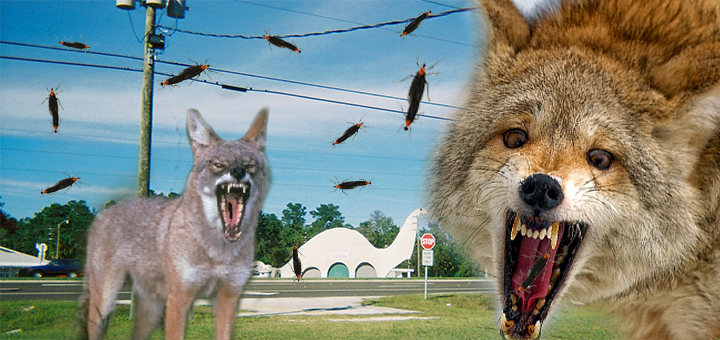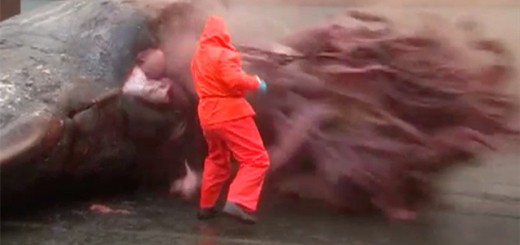USF admits lovebug-eating coyote project has gone awry

By Frank Fencil | frank.fencil@springhillcourier.com
SPRING HILL, Florida — University of South Florida researchers hoped their plan to take a bite out of the bug population would build some rabid fans.
What they’ve gotten so far are some literally rabid critics.
The team of researchers spent more than 15 years breeding coyotes that eat lovebugs and their eggs and then spent the last 12 months released some 400 of them throughout the Tampa Bay area, including more than 100 in Hernando County alone.
But the genetically modified coyotes have proven to have a taste for human flesh and little or no fear of what it takes to satiate that desire. More than two dozen Hernando residents have tested positive for rabies after being bitten by the confounded canines.
“For decades, we thought we could never feel worse than after creating lovebugs in our lab and releasing them to feed on mosquitoes only to find they prefer plant matter,” researcher Thomas Gripplegorn said. “But now we rue the day we let loose these man-eating beasts.”
Sheriff’s Department officials are encouraging residents to carry small clubs or bats with them and bludgeon the animals on sight.
“We don’t want anyone doing anything rash, and we don’t condone animal cruelty, but if they want to make it a case of us versus them, well, I’m just saying,” county spokesman Dill Prim said.
Gripplegorn said he and his team are already back to work and have stumbled on a promising solution.
“We’ve been interbreeding Florida panthers, partially in hopes of building back up the population, but we’ve found a group of them that has taken to eating both lovebugs and coyotes,” he said. “We have hopes that in another couple generations of breeding we’ll have a viable group that should solve all our problems when released into a suburban area.”



